The Ultimate Guide to Journey Orchestration
By Ian Donnelly
04/26/2023

Customer journey orchestration is more than a trend or a fleeting phase in the ever-changing world of martech.
It’s a shift in the way businesses view their relationships with their audience, and it’s a viewpoint you need to adopt to keep up with customer expectations.
Journey orchestration lets each customer take an active role in defining their personal experience with your brand, like a choose-your-own-adventure book. And as a business, you are the author. You give them the choices and guide the way, steering them towards the perfect products and enticing them to purchase.
You are expected to build, adapt, and orchestrate their customer journey. Here’s everything you need to know to make that happen.
What Is Customer Journey Orchestration?
At its core, journey orchestration is a simple equation: customer behavior + omnichannel communication.
Journey orchestration is the process of understanding customer behavior across all channels and applying that data to map out personalized campaigns that best engage with your audience.
It all hinges on your ability to connect your customers to the touchpoints they have with your brand, which reveals so much about their preferences and inclinations for engagement — whether they favor a promotional email first thing in the morning, a website visit on their lunch break, or a social media ad instead of an SMS message.

With that vital information, you can craft truly personalized campaigns. And the more up to date your data is, the better your marketing efforts will be.
That’s why real-time data is an essential component of journey orchestration. You need to know how, where, and when your customers interact with your brand, and you need to know the moment it happens. Because to orchestrate the ideal customer journey for every customer, each step needs to inform the next one.
For instance, if a customer clicks on an email, visits your website, and completes a purchase, they need to be reengaged and remarketed accordingly. If they don’t interact with that email, they need a completely different approach for reengagement.
To offer the best customer experience, their choice has to dictate the marketing they receive. That’s the level of personalization that true journey orchestration offers.
Why Do Businesses Need Journey Orchestration?
The degree of one-to-one personalization that journey orchestration offers is awe-inspiring. But do modern businesses really need this targeted approach to reach their customers?
Absolutely. In the age of digital commerce, journey orchestration is far from a supplemental feature for your marketing strategy. It needs to be a fundamental pillar in your business plan.
Your Customers Deserve a Personalized Experience
Think about your own experience as a customer. Do you use multiple devices regularly throughout your day? When you shop, do you expect businesses to incorporate the preferences you identified into your shopping experience?
The answers to these questions are likely yes because ecommerce personalization is now the standard for modern business. Your customers are using multiple channels at any given moment, and your brand needs to be ready to engage with them where it matters most.
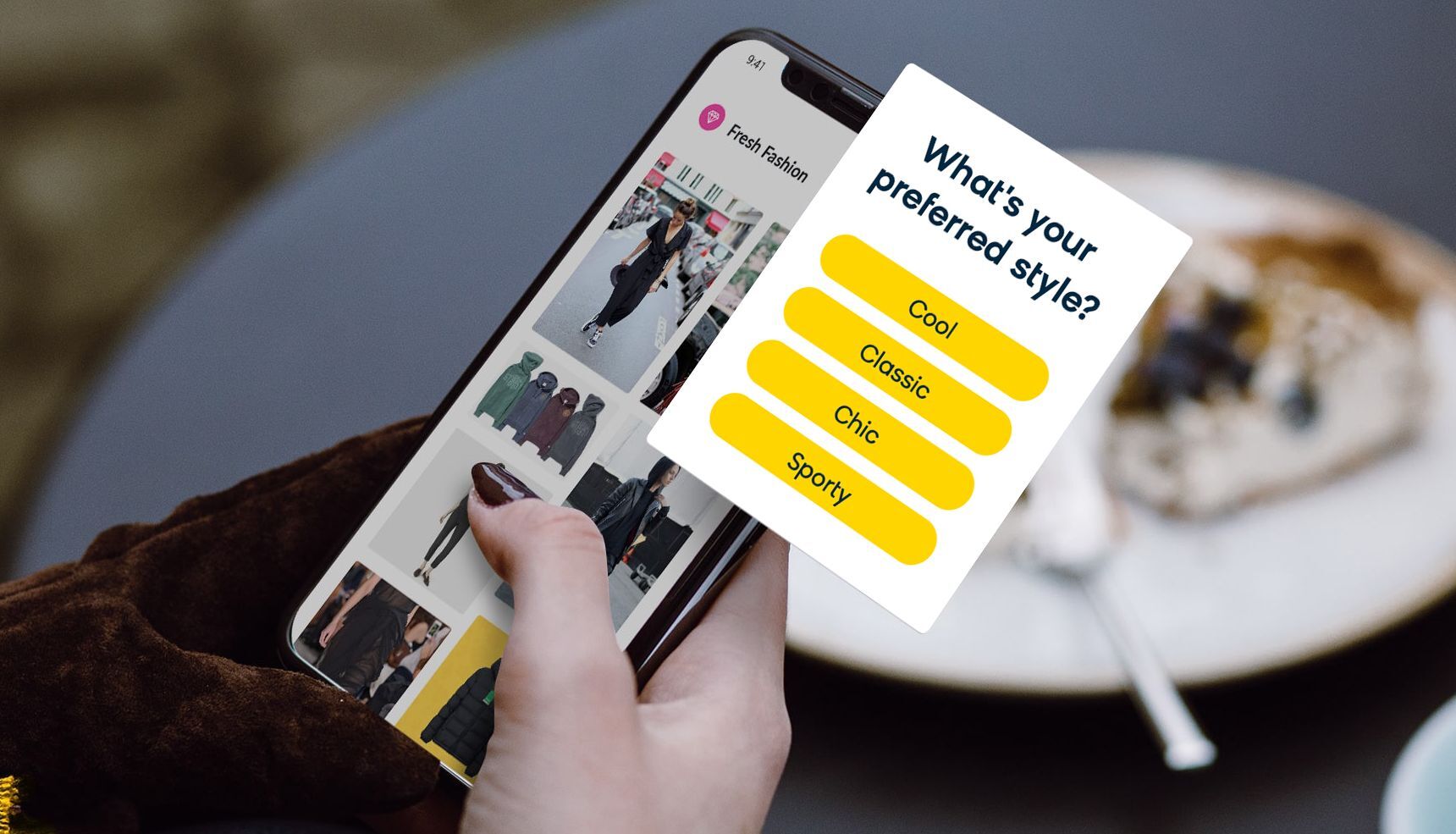
The Best Experiences Are Built Through Communication
Your audience doesn’t just expect you to serve them promotion after promotion until one entices them to make a purchase. They expect your brand to listen to them. When they willingly provide their data to you, whether it’s zero-party data or through other sources, they presume you will use it to make their experience more personalized.
The best way to give your audience the experience they deserve and connect with them on the channels that matter is through journey orchestration. It turns your marketing efforts into a dialogue, incorporating the learnings and insights you gain from every interaction to inform the next one.
Personalization Is a Must For Modern Marketers
Personalization isn’t just a goal for the future. It’s a necessity for today’s brands who want to thrive in the modern market, providing a competitive advantage in today's crowded digital marketplace.
Customers are continually being bombarded with marketing messages throughout their day, and the companies that stand out are the ones that deliver tailored experiences. By orchestrating each step of the customer journey to fit a shopper’s unique needs, brands can create a customer experience that differentiates them from competitors. It’s the best way to improve customer relationship metrics across the board, from brand recognition to customer loyalty.
The Essential Steps To Map Out Customer Journeys
Every marketer knows the five basic steps of the customer journey:
-
The brand awareness phase, where the goal is to become a brand that customers trust.
-
The consideration phase, where customers are weighing their options between brands.
-
The decision phase, where they choose their brand and complete a purchase.
-
The retention phase, where remarketing efforts try to keep them engaged.
-
The advocacy phase, where the customer becomes a champion of your brand.
But this is far from a detailed road map that businesses can use to engage with their ideal audience. These big, broad phases don’t address the nuance of a customer's experience. They are a great place to start, but there is so much more to map out if you want a successful customer journey.
Here are the three main steps you need to take if you want to orchestrate a great customer experience.
Step One: Collect the Right Data
Data is the fuel you need to craft a great customer journey, so collecting it correctly is incredibly important. A consistent customer experience across channels, appropriate product recommendations, tailored communications — they all rely on data.
And there are a lot of sources, types, and data sets you need to tap into to get the data you need, including:
-
Events: behavioral data from a user’s actions in a session on a website, in an app, or on a mobile browser.
-
Customer Attributes: names, addresses, contact details, birthdays, etc. for your customers.
-
Transactional Data: purchases, returns, and other info from ecommerce or POS systems.
-
Customer Service Data: live chat data, the number and length of interactions, frequency, NPS scores, and other data from CRM systems.
A customer data platform can help you gather and organize all this transactional, demographic, and behavioral data and get a holistic view of individual customers. It’s a daunting amount of information, but with the right tools, you can make it work to your business’ advantage.
Step Two: Create Omnichannel Campaigns
Without an omnichannel approach to commerce, your customer journey mapping is bound to hit bumps in the road and dead ends.
Omnichannel commerce is a multichannel approach to sales that focuses on providing a seamless customer experience. It aims to connect all your channels and give your audience the same quality and service, whether the client is shopping online from a mobile device, on a laptop, or in a brick-and-mortar store.
A seamless experience is paramount for customer journey orchestration. You need to engage customers where and when it is convenient for them, and each channel needs to reflect the experience they expect from your company.
Step Three: Analyze, Report, and Optimize
Customer journey orchestration relies on the activation of real-time data, which means your insights and analysis needs to be just as efficient — and just as comprehensive.
To make omnichannel campaigns that personalize marketing efforts on an individual level, run-of-the-mill analysis doesn’t cut it. Your insights have to help you connect the dots for campaigns instantaneously, and help you predict future customer intent.
Which content types lead to shopping sessions? Which channels are they more likely to engage with next? Which CTA has historically led to a purchase? Your reporting needs to determine the best action, channel, message, and time to execute your customer’s entire experience.
What Is a Journey Orchestration Engine and Does Your Business Need One?
A journey orchestration engine is a technology platform built to help you map out your customer journey with customer analytics and omnichannel campaign orchestration.
Once it has the data it needs, a traditional journey orchestration engine can help marketers manage and curate the customer journey in one place, rather than building campaigns and executing them individually across different channels.
There is a diverse array of journey orchestration platforms available on the market, each with their own strengths and features. But Bloomreach Engagement is the only marketing platform that offers the powerful capabilities of a CDP, dynamic and thorough analytics with machine learning capabilities, and omnichannel flows that natively integrate every marketing channel — all within a single solution.
No other software gives you such complete control over every aspect of the customer journey, which in turn allows you to build unique experiences across all channels and devices.
What Tools Do You Need for Effective Journey Orchestration?
To effectively compose a customer’s ideal experience, you need a few key tools and capabilities to put the philosophy of journey orchestration into practice:
-
A data collection tool. Without a customer data platform or advanced data collection capabilities to gather the data you need, your customer journey orchestration efforts will fall short from the start.
-
A single customer view. You need a unified profile for each customer’s information, also known as a single customer view, to be able to activate your data with personalized touchpoints across the customer journey.
-
Real-time customer journey analytics. Capturing insights in real time is essential. You need holistic reporting with a high-level overview, as well as deep analyses with customizable metrics and dashboards.
-
Omnichannel orchestration. Delivering unified experiences across all your digital touchpoints, and integrating those channels into one cohesive strategy, is one of the fundamentals for customer journey orchestration.
-
A/B testing capabilities. Adjusting campaigns in the moment is a crucial feature. You need to be able to react to insights and reports and make changes based on real-time campaign performance, anytime you need.
-
Marketing automation. Creating adaptive campaigns and implementing them in real time requires an automated omnichannel experience — one that is easy to set up for multiple segments and conditions.
What Does an Orchestrated Customer Experience Look Like?
Customer journey orchestration can take your marketing efforts from good to great, but it doesn’t need to be a complex ordeal.
If you’re looking to introduce customer journey orchestration to your business strategy, a great place to start is at the beginning of your relationship with a customer: the onboarding process. And one of the easiest ways to orchestrate their experience is to create an automated welcome email series like the one outlined below.
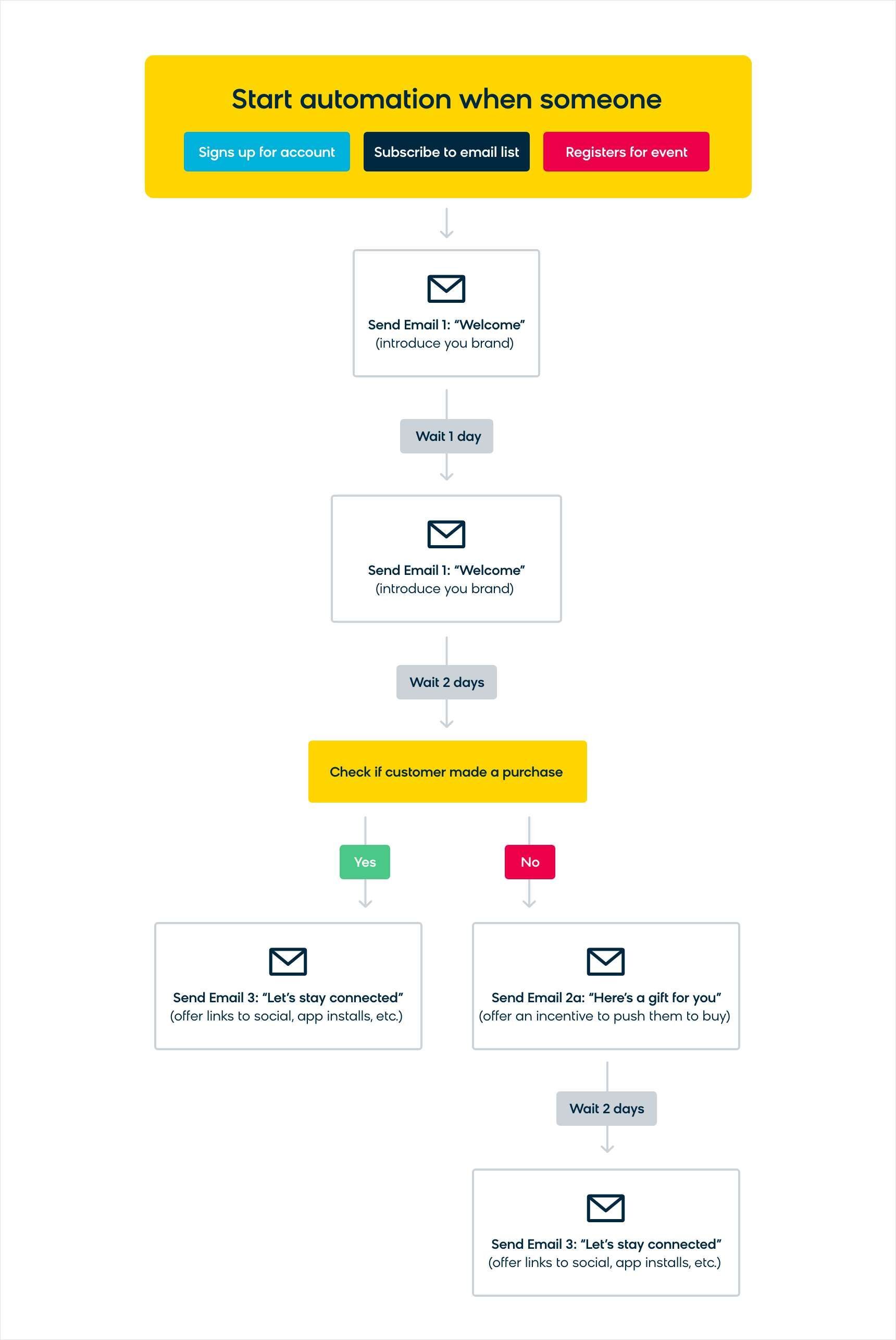
With a plan like this, you can guide the customer journey while keeping every touchpoint reactive to each choice your customer makes.
The first email is a generic email that introduces your company, explaining what they can expect from your emails. The second, sent a day later, spotlights your brand’s best attributes and encourages the user to move to the next stage in the lifecycle journey.
The next step in the series depends entirely on the recipient’s interaction with your emails so far.
If they already made a purchase, you can automatically trigger a message to that customer segment, encouraging them to connect with your social media or install your app.
If they haven’t yet acted on the previous emails, you can set up a trigger that incentivizes this segment to do so through a special deal or discount, and then follow up with a suggestion to connect on other platforms.
Even with a simple, straightforward level of personalization like this series, you can demonstrate that your marketing is paying attention to your customers’ needs. It just takes a few triggers, customer segments, and conditions put in place to get things going.
And from here, there’s no limit to what your customer journey orchestration efforts can become. There are plenty of ways to fine-tune your campaign — you can incorporate further channels, A/B test all the timelines and touchpoints, and build off insights to reach your most high-valued customers.
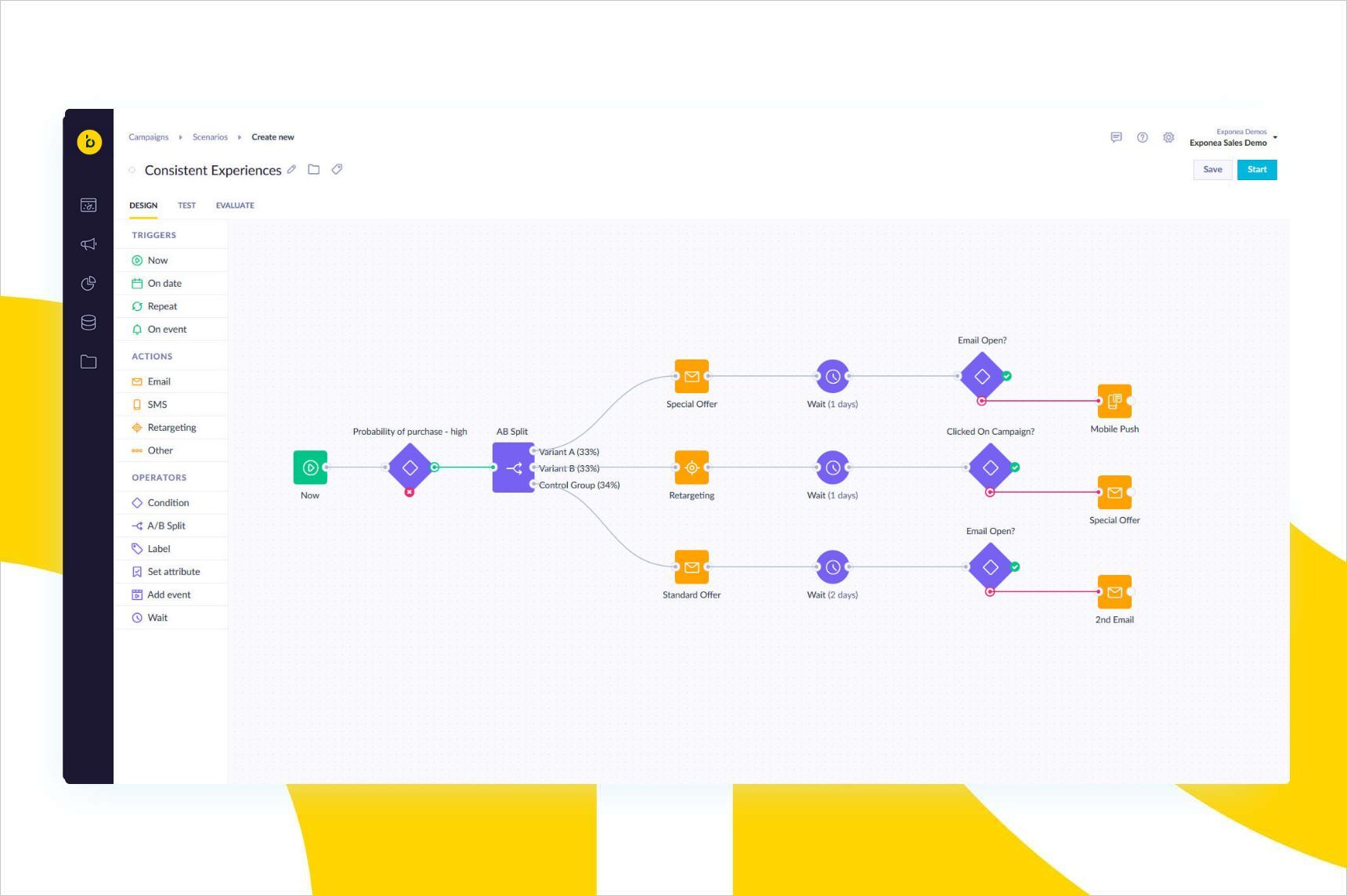
What Are the Most Significant Customer Journey Orchestration Metrics?
With a variety of channels, data points, and goals that can be attached to an orchestrated customer experience, it’s hard to pin down any one metric as the most important. It really depends on what your campaign is trying to accomplish at any given stage in the audience’s entire journey.
But one important aspect to keep in mind while evaluating your campaigns is the technique you use to measure results. Multi-touch attribution — a method designed to understand all of the channels that contribute to a conversion instead of just the first or last — will help you truly understand how your multichannel journeys are performing.
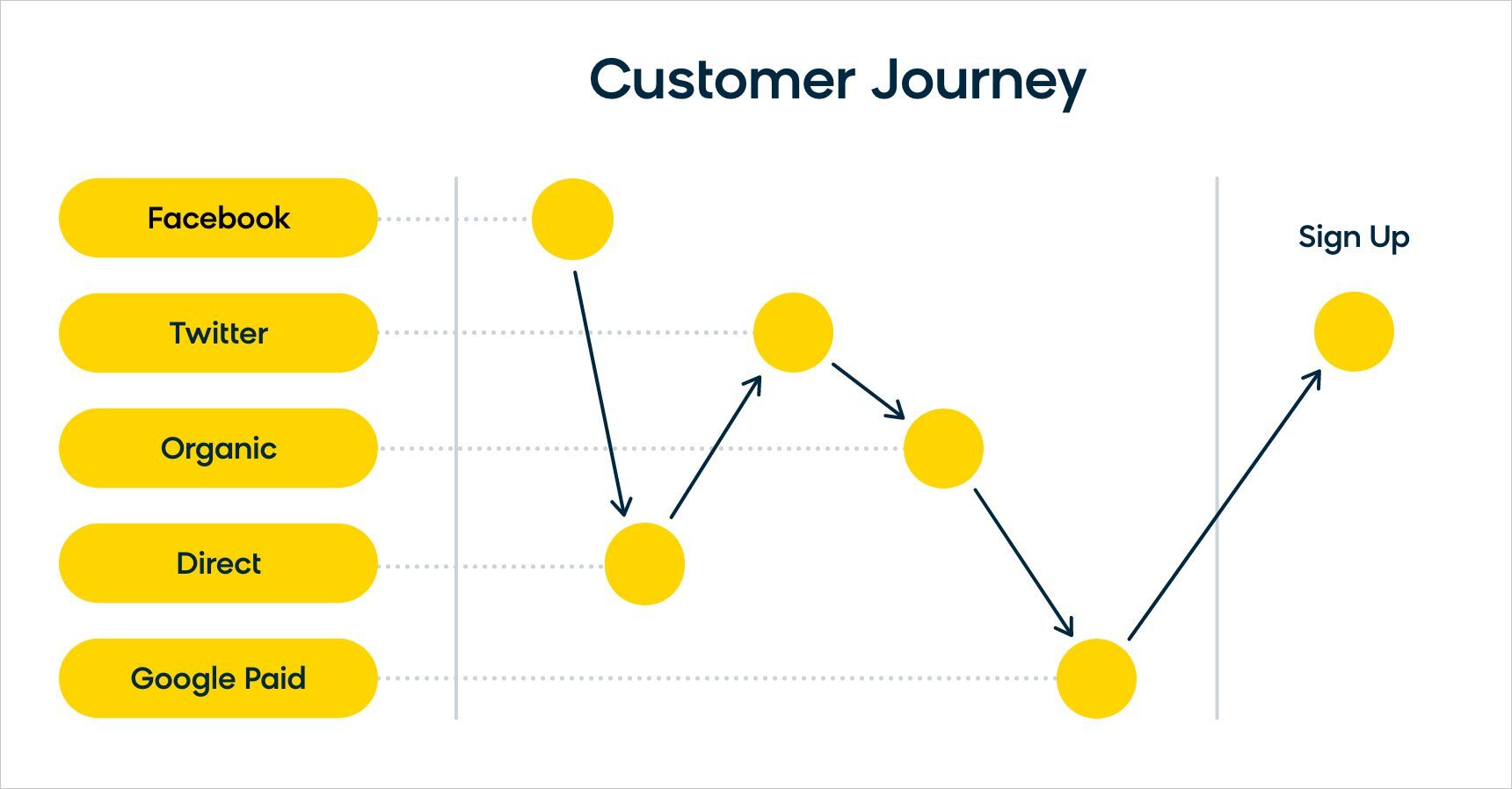
Other methods, such as first-touch or last-touch attribution models, don’t tell the full story of your orchestrated journey. They give all the credit to the beginning or the end of a campaign respectively.
But with multi-touch attribution, you can recognize the strengths and weaknesses at each stage of the customer experience. This is vital for your campaign reporting, customer journey analytics, and optimization.
As for specific KPIs to keep an eye on, there are some recommendations that align with best practices no matter what your customer journey looks like. Churn rate, retention rate, and especially customer lifetime value are all good KPIs to monitor and weigh your campaigns against.
Business Benefits of Customer Journey Orchestration
There are dozens of benefits for brands that incorporate customer journey orchestration into their business strategy, from better ROI and average order values to increased engagement and customer loyalty.
But the major advantage that any business gains when they adopt journey orchestration is the fundamental shift their marketing takes on. That’s because customer journey orchestration is the future of ecommerce — it’s the new, vital model of engaging with your audience.
As Forrester has noted, one of the biggest benefits of journey orchestration is the adaptability it affords brands, as well as the scale at which they can adjust accordingly. Customer journey orchestration is designed to respond to changing customer behavior in real time, and if the last decade has taught businesses anything, it’s that change is a constant.
This adaptability is at the heart of the customer-led transformation going on in ecommerce. The customer now has a direct, real-time influence on your marketing strategy as opposed to the reactive, wait-and-see results that marketers previously had to rely on.
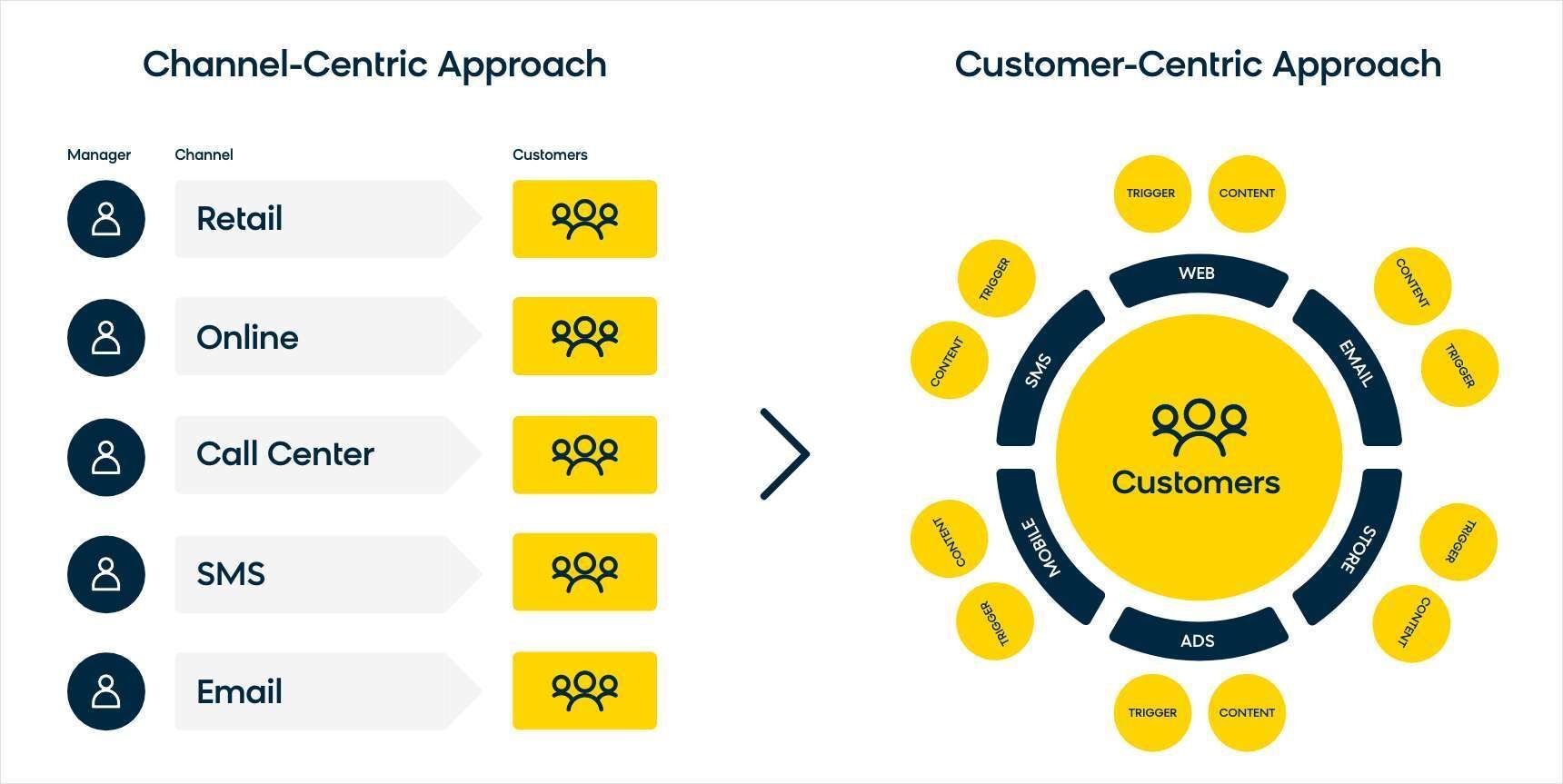
Without customer journey orchestration, strategies are too far removed from the individual decisions of customers. No matter which channel your business uses to engage with your audience, each one is an island unto itself. This channel-centric approach inevitably leaves you with siloed and inflexible channels.
With a more customer-centric approach — one that allows a customer’s unique behavior to interact with campaigns and trigger unique experiences based on their engagement — your campaigns consistently resonate with your audience. And your audience’s real-time input has a direct role in the adjustments your campaigns make, so you’re guaranteed to delight them with the next step in their experience.
Bloomreach Engagement: A Customer Journey Engine and So Much More
For an all-in-one platform that offers CDP capabilities, seamless omnichannel flows, and real-time journey orchestration, look no further than Bloomreach Engagement.
Our powerful solution provides a single marketing view of real-time customer data, campaign automation across 13 channels, and analytics that make it easy to grow your brand and your revenue with dynamic, personalized marketing.
Plus, our intuitive drag-and-drop scenario builder allows you to orchestrate effective customer journeys with just a few clicks. You can easily manage complex campaigns, trigger automated experiences, and make any adjustments on the fly with A/B testing.
It’s the perfect marketing platform for all your business’ needs, and it’s designed to scale with your most ambitious goals.
Ready to see what Bloomreach can do for you? Watch the video below to learn more about what our powerful platform can do for yo or schedule a demo today.
Found this useful? Subscribe to our newsletter or share it.







